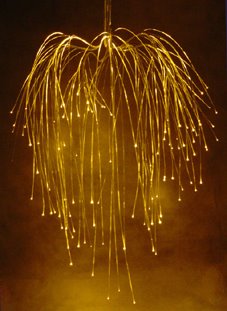Like many designers, I am inspired by the work of particular artists. One such artist is Dan Flavin.
I recently read a book of essays about Flavin which added to my understanding of this artist. Flavin is best known for his lighting installations in the 1960's using fluorescent tubes strategically placed in a gallery or interior.
A few points I jotted down from these readings -
• the idea that Flavin’s art is not just about the work itself but about the physical space around it and the context of display.
• the connections between his work and the Impressionists, Matisse ( after whom he named at least one artwork), Mondrian and pop art,
• broader ideas of light as art – exploring the idea of light as impermanent, ephemeral, kinetic (pulsating and changing).
• Idea of the fluorescent tube being a “readymade” out of its usual environment of the factory or office.
• His work also poses questions about about our relationship with technology. ALso the transitory nature of technology - when Flavin was working fluorescent technology was still relatively new however, we are moving on from these light sources which in themselves will eventually fail.
There is a real elemental simplicity in Flavin's work which always challenges me as well.
Saturday, October 11, 2008
Thursday, September 11, 2008
sources of inspiration
People often ask me what inspires me in my work. The natural environment and the work of artists and designers all inspire me. But there some texts which have also got me thinking about the role of lighting. One of these is the seminal book by Japanese novelist Junichiro Tanizaki called In Praise of Shadows.
Written in 1933, Tanizaki contrasts the traditional Japanese aesthetic to, what he sees as, the intrusive nature of western technology represented by the electric light bulb. Japanese are comfortable with ideas of mystery and concealment ( expressed architecturally by the shojii – paper sliding doors which also act as walls and screens), whereas the Western approach demands that everything be exposed to the gaze of the viewer through the medium of the brightly lit interior. Tanizaki writes how Japanese find beauty in ….. “ the patterns of shadow, the light and the darkness, that one thing against another creates”.
As well as being inspired by the poetic nature of the discussions, I also came to appreciate how much of an intervention electric lighting can be and to look more critically at how lighting (and technology) functions in our interiors.
This book has been very influential and almost all good books on lighting refer to it in some way or another. I have my own copy - which I annotate with thoughts and ideas.
Written in 1933, Tanizaki contrasts the traditional Japanese aesthetic to, what he sees as, the intrusive nature of western technology represented by the electric light bulb. Japanese are comfortable with ideas of mystery and concealment ( expressed architecturally by the shojii – paper sliding doors which also act as walls and screens), whereas the Western approach demands that everything be exposed to the gaze of the viewer through the medium of the brightly lit interior. Tanizaki writes how Japanese find beauty in ….. “ the patterns of shadow, the light and the darkness, that one thing against another creates”.
As well as being inspired by the poetic nature of the discussions, I also came to appreciate how much of an intervention electric lighting can be and to look more critically at how lighting (and technology) functions in our interiors.
This book has been very influential and almost all good books on lighting refer to it in some way or another. I have my own copy - which I annotate with thoughts and ideas.
Monday, June 30, 2008
Designing lights
Is lighting about the product or the experience? Some designers are able to express the poetic nature of light but don’t understand the particular demands of this family of products. Light fittings need good resolution of detail, the correct material choice and an awareness of the practical demands (lamp maintenance, cleaning, installation). All this needs to look easy and the fitting itself should still express the beauty of light itself.
In my readings as part of my research degree I came across the following from an Art Journal in 1895. The author was un-named ( alas) but he or she has summarized it well:
"To design for electric light fittings is one of the things that seems so easy, and is yet to difficult; the good fitting has, as the good Philistine would say, so little to show for itself. Numbers of small details make up the design of the whole."
Got it in one– and yet we all still love designing lights!
In my readings as part of my research degree I came across the following from an Art Journal in 1895. The author was un-named ( alas) but he or she has summarized it well:
"To design for electric light fittings is one of the things that seems so easy, and is yet to difficult; the good fitting has, as the good Philistine would say, so little to show for itself. Numbers of small details make up the design of the whole."
Got it in one– and yet we all still love designing lights!
Thursday, June 26, 2008
News from Ruth McDermott
Hi, this is my first blog. I am hoping that it is a way of communicating with other like minded people who are interested in lighting. I am currently commencing a Masters by research around the area of lighting which I will be talking more about soon. I have also just found a new distributor of my Bling lights. A beautful gallery in Surry Hills, Sydney called Metalab. Hoping we can collaborate on some interesting work in the future.
cheers RUTH
cheers RUTH
Subscribe to:
Posts (Atom)
